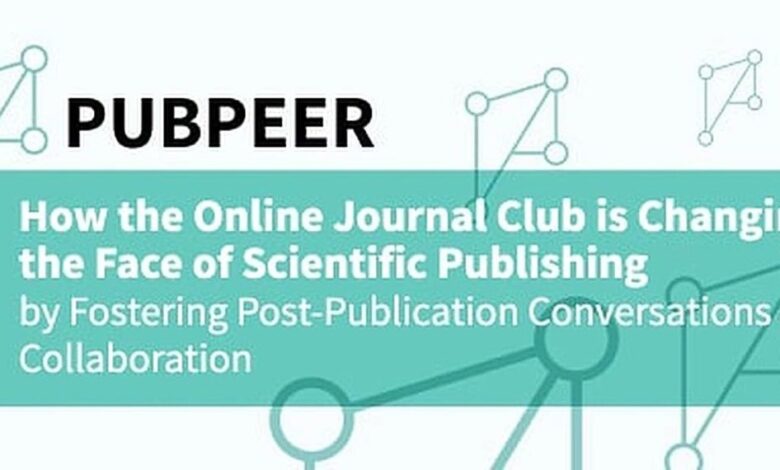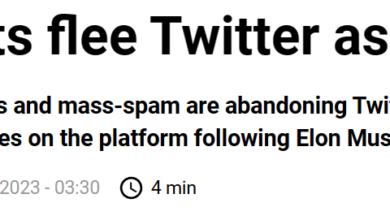Phoma destructiva’s 2nd comment on Pubpeer – Watts Up With That?

By Andy May and Marcel Crok
Phoma Destructiva’s full comment is shown indented, as a block quote. To view the original see This. To view a summary of our article, visit This. The official article is still subject to a fee, to download the full final submission of our article, fully peer-reviewed, for free click This or visit my ResearchGate page This. Our article, published on May 29, 2024, is in 99.7% of the 26.5 million research articles tracked by Wiley.
To download a bibliography containing most of the articles cited in the discussion below, visit This.
Below is our discussion of Phoma Destructiva’s second comment. His comment is indented and his comment quotes our first response starting with “Note D:”. Phoma’s response follows his quote and our response follows the block quote in normal text.
Note D: “The first part of the main review is actually a long review of Javier Vinós’s book Climate of Past, Present and Future, which has nothing to do with our article.“
False. As shown in #1, quotes 18, 19, and 20 in the author’s article are quotes from Vinós’s book. The authors use that book to suggest Some of the warming caused by humans may instead be due to “force of nature“:
“Since general circulation climate models and the modern hypothesis of CO2 and greenhouse gas warming were developed in the 1960s and 1970s(17), numerous natural climate oscillations have been detected. These long-term climate oscillations and the resulting “climate regime shifts”(18) strongly suggest that natural forces, possibly due to cyclical changes in the Sun,(19) are causing some of the recent global warming observed since 1920, or even earlier.(20)“
We stand by our original statement and see no merit in Phoma destructiva’s argument. We make no predictions and Vinós’ predictions are irrelevant.
Note D: “In the introduction to his review, Phoma destructiva writes: “The authors and their sources may have underestimated human-caused global warming.” We do not provide any estimates of the human component of global warming.“
Authors repeatedly attempt to attribute at least some of the human-caused global warming to non-human factors, as in the above quote from Vinós. This is an underestimation of human-caused global warming, regardless of whether the authors provide accurate quantitative estimates of human-caused warming. Attributing to X what is actually caused by Y is an underestimation of the impact of Y, regardless of whether one provides accurate quantitative estimates of the impact of Y.
We believe and provide evidence that “at least some of the human-caused global warming” is due to non-human factors. “Some” is not an estimate. The dictionary definition of “estimate” is clear and unambiguous as “a rough calculation or assessment of the value, amount, quantity, or extent of.”
Note D: “The following section attempts to argue for the existence of all multi-decadal ocean oscillations based on two papers by Michael Mann and co-authors, Mann, et al. (2020) and Mann et al. (2021).“
Other articles cited include: The Man 2014, St. Clement 2015, Hamburger 2017And Haustein 2019. And this argument against a “non-coerciveAtlantic Multidecadal Oscillation (AMO)” discussed in the author paper. Such a natural ocean cycle probably does not exist, as illustrated by the fact that contrarians have made erroneous predictions about temperature trends (#1).
The “unforced” and “unforced” events are poorly defined climate model categories with very flexible definitions and little meaning in the real world. Our paper does not use the terms “forced” and “unforced” for that reason. Introducing these terms is both a distraction and a straw man fallacy. Our paper uses the real world terms “Anthropocene” and “Natural”. Forcing and unforced introduce an unnecessary level of complexity and are simply a childish attempt to distract from the real issues discussed in our paper. In short, the AMO is a real oscillation that has been successfully traced back to 1600 AD, so it has existed from pre-industrial times to modern times and must have a natural component.
Note D: “In fact, he admits: “Based on available observational and modeling evidence, the most plausible explanation for the multi-decade peak seen in modern climate observations is that it reflects a response to a combination of natural and anthropogenic forcing over the historical era.” (Mann, Steinman & Miller, 2020) We agree with this statement and it fits our paper.“
No, it is not consistent with the author’s article, as explained in #1 with citations to Dr. Karsten Haustein and Dr. Peter Jacobs in 2019next to Haustein 2019 And CarbonBrief. Again, if the observed peaks are due to impacts rather than non-impacts, then they have been accounted for and are not some independent cause of warming beyond the impacts already accounted for:
That is contrary to this author’s paper:
“What if the so-called human-caused warming since 1976 has been driven by a natural cycle? That would mean the IPCC’s calculation of the impact of human-caused greenhouse gases is too high. […]“
Again with “unforced” and “forced.” These are meaningless climate modeling terms. Mann writes: “the combination of natural and human influences over historical periods.” Our article contains, “What if human-caused warming since 1976 has been driven by a natural cycle?” What is the difference? We both believe that both man-made and natural forces contribute to ocean oscillations such as the AMO and “climate observation.” Hiding behind vague terms like forced and unforced doesn’t change that fact.
Note D: “The anonymous reviewer of our paper then turned to comparing the predictions of Vinós (Wyatt & Curry, 2014) and others with the IPCC predictions. We are not making predictions, we are just citing observations.“
Predictions are tests of causal hypotheses. The authors cite Dr. Vinós’ hypothesis as the cause of some of the observed warming. So it would be good to evaluate the predictions of his hypothesis to see if they fail. The same goes for Dr. Curry’s failed predictions based on the AMO contributing to warming and the IPCC’s successful predictions based on human-caused GHGs driving warming.
We agree that prediction is an important part of the scientific process, but we did not make any predictions in the paper, and that was intentional. As for whether Vinós and Curry’s predictions are correct, you don’t know, I don’t know, and neither does anyone else. The end of the prediction period is more than a decade away. Don’t say “failure” when you don’t know.
Note D: “This critique is a mirror of everything that is wrong with modern climate science. Phoma destructiva constructs obvious straw men from papers we cite, unrelated to our argument that observations show no net danger or harm from present-day climate change, and then attacks his own straw men, rather than our papers. Unfortunately, this kind of irrelevant straw man fallacy is common in climate science and should never be trusted.“
It is not a fallacy for me to quote the author’s paper and then directly address what was quoted. The citations suggest that the author’s paper suggests that warming is actually caused by humans rather than by other factors, such as natural variability. Those suggestions are still in the paper, even if the authors highlight other arguments they make in their paper.
Your discussion of Vinós and Curry’s supposedly failed predictions is just a straw man. Your discussion of “forced” and “unforced” is just a misleading straw man. Our suggestion that the AMO is a natural oscillation and has contributed to modern warming is well supported in the literature and in our paper. You are free to disagree with our conclusion, but our conclusion is based on the evidence and citations in our paper. You have not provided any evidence that our conclusion is incorrect, nor have any of your sources provided evidence.
Mann writes: “Based on available observational and modeling evidence, the most plausible explanation for the multi-decade peak seen in modern times climate observation is it reflects the reaction to a combination of natural and artificial pressure in historical times.” (Mann, Steinman, & Miller, 2020). [Bold added]
Well then it seems he agrees with us.
If you really believe that all modern warming is caused by humans, as the IPCC does, then fine, but that doesn’t fit the data we present in the paper, nor does it fit your sources.
Andy and Marcel
Related



